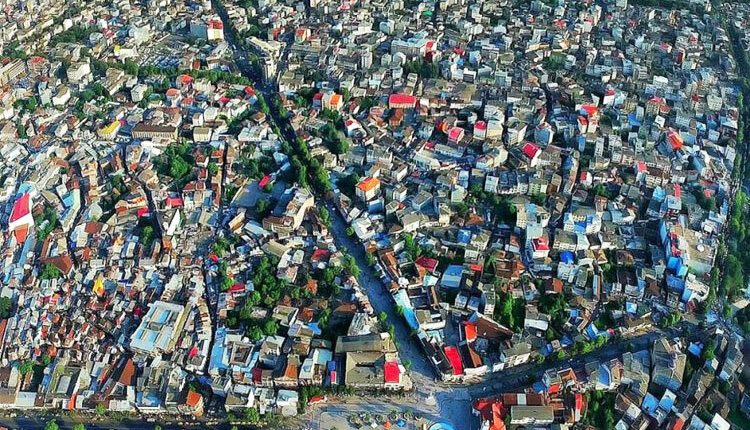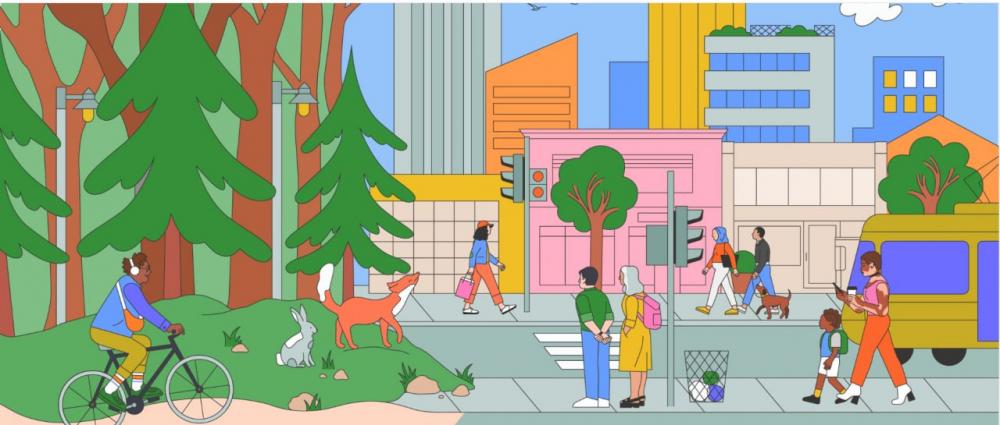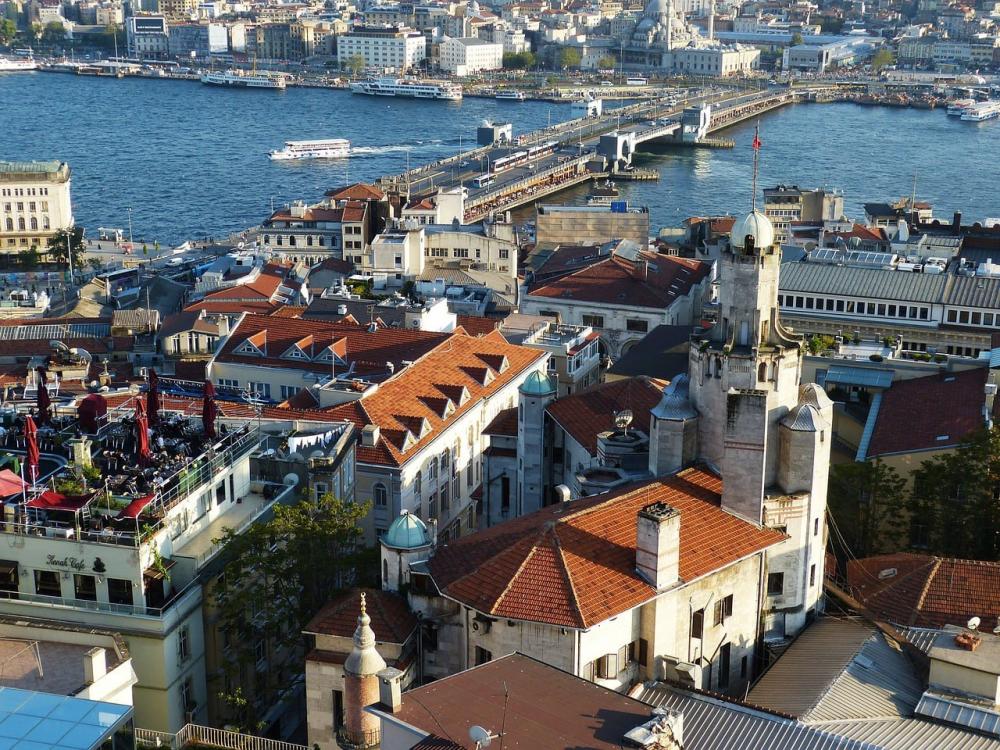
چای پس از برنج، بیشترین سطوح اراضی و اشتغال در کشاورزی گیلان را به خود اختصاص داده و معیشت بیش از ۵۵ هزار باغدار و کشاورز به آن گره خورده است. ۹۰ درصد باغات چای کشور در گیلان و ۱۰ درصد در مازندران قرار دارند و چایکاران این دو استان در سطح ۲۸ هزار هکتار باغ چای از اواسط اردیبهشت به چین برگ سبز چای بهاره مشغول شده اند.
همزمان با شروع چین بهاره چای در باغات استان، هفته گذشته رئیس سازمان چای کشور با اشاره به اینکه تاکنون ۱۹۸ میلیارد تومان برگ سبز چای از چایکاران خریداری شده مدعی شد؛ بیش از ۹۹ درصد برگ سبز چای خریداری شده درجه یک و با کیفیت است.
این سخنان در حالی مطرح میشود که بنابر تحقیقات کارشناسان ایستگاه تحقیقات چای کشور؛ طی سالهای اخیر با شروع تغییرات اقلیمی در سطح جهان و نفوذ دامنه اثر گذار این تغییرات درسطح محلی و منطقه ای، باغات چای در استان های شمالی نیز آسیبپذیر شده اند. تغییرات اقلیمی ضمن اثر گذاری در کیفیت چای، تبعات اقتصادی و کاهش عملکرد در برگ سبز و تبعات اجتماعی را نیز به دنبال دارد. با تخریب باغات، به تدریج باروری باغات کاهش و باغات به ویلا تبدیل میشوند. از این رو تهدید بزرگ تغییرات اقلیمی برای باغات چای استان، تغییرکاربری و تبدیل آن ها به ویلا است. عاملی که بدون بازگشت است.
بنا به آمارهای سازمان چای کشور، کاهش ۲۵ تا ۳۰ درصدی بارش ها در فصل کاشت و برداشت در چند سال اخیر، موجب کاهش ۶ درصدی تولید برداشت برگ سبز چای شده است. آمارها نشان میدهد که از سال ۲۰۰۰ میلادی تولید چای در گیلان به شدت کاهش پیدا کرده است. در این بین برخی از تولیدکنندگان چای با اجرای مکانیزاسیون و بهزراعی در باغات قدیمی چای موفق به تولید چای با کیفیت و درجه یک شده اند.
 «عمید پورغفار مغفرتی» دارای دکترای مدیریت صنعتی و کشاورزی است. او ضمن اینکه فعال اجتماعی، مدیرعامل انجمن فرهت ومدیر مسوول نشریه قاف است؛ بعنوان تولید کننده چای توانسته با اجرای مکانیزاسیون و بهزراعی، باغ فرسوده چای خود را کیفی سازی کند. از او بیشتر درباره مدرن سازی باغ چای و ارتقا کیفیت این محصول پرسیدیم.
«عمید پورغفار مغفرتی» دارای دکترای مدیریت صنعتی و کشاورزی است. او ضمن اینکه فعال اجتماعی، مدیرعامل انجمن فرهت ومدیر مسوول نشریه قاف است؛ بعنوان تولید کننده چای توانسته با اجرای مکانیزاسیون و بهزراعی، باغ فرسوده چای خود را کیفی سازی کند. از او بیشتر درباره مدرن سازی باغ چای و ارتقا کیفیت این محصول پرسیدیم.
س ـ در یادداشت اخیر شما آمده بود که صنعت چای می تواند بخشی از عقب ماندگی اقتصادی استان را مرتفع کند. برای ما این پرسش ایجاد شده است که وقتی می گویید صنعت چای و توسعه آن، دقیقا منظور شما چه ابعادی از چنین اقتصادی است؟
ج- مدیریت چای در طول ۴۵ سال اخیر ولنگار شده است. به طور دقیق میتوانم به دوره ریاست جمهوری احمدی نژاد اشاره کنم که در این دوره بیش از ۱۳۵ هزار هکتار از باغات و اراضی کشاورزی در معرض تغییر کاربری قرار گرفتند. این درحالیست که در دوره روحانی حتی یک متر از باغات و اراضی اجازه تغییر کاربری نیافتند و حتی بخشی از باغات چای در این دوره احیا شد. در واقع کشاورزان و باغدارانی بودند که با استفاده از فناوری بالا و دانش ژاپنی و چینی توانستند باغات فرسوده را به باغات درجه یک تبدیل کنند. این باغداران توانستند بخشی از اراضی که در اختیار دولت بود را دوباره بوته کاری کنند.
بزرگترین عاملی که باعث نابودی باغات چای شده بحث قوانین شرعی وراثتی است که موجب کوچک شدن باغات و نابودی آنها شده است.
معتقدم با سپردن کار دست این افراد و با آموزش به باغداران، میتوان سطوحی از باغات قدیمی که باقی مانده اند و امکان بوته کاری این گیاه همیشه سبزدر آن جا وجود دارد دوباره احیا شود. کاری که در حال حاضر در برخی از باغات فومن، شفت توسط دوستان همکار انجام شده است.
س ـ تصور میکنید با این کار چه سطح از اراضی زیرکشت خواهد رفت؟
ج- نمیدانم. باید آمار دقیق را از جهاد کشاورزی پرسید. اما ابتدا باید جلوی تغییر کاربریها گرفته شود بعد به دنبال احیای باغات رها شده و قدیمی باشیم. در این سال ها بزرگترین عاملی که باعث نابودی باغات چای شده بحث قوانین شرعی وراثتی است که موجب کوچک شدن باغات و نابودی آنها شده است.
س ـ چه حجمی از سرمایه و نقدینگی بخش خصوصی استان درگیر میشود؟ مدت بازگشت این سرمایه در چه بازه زمانی خواهد بود؟
ج- بستگی دارد سرمایه گذاری چه مقدار باشد، چند هکتار وجود دارد که نیاز به این کاربری دارد. بعد از آن میتوان برآورد دقیق ارایه داد که بازگشت سرمایه چه میزان خواهد بود. البته بازگشت سرمایه در باغات چای بعد از۱۶ الی ۱۸ ماه بعد از کاشت بوته آغاز میشود و بعد به شکل تصاعدی افزایش پیدا میکند. عموما بعد از ۲۴ ماه سرمایه کامل باز میگردد.
راه دیگر نیز احیای باغات فرسوده توسط مدیریت صنعتی و ورود افراد متخصص به کار است. اینها میتوانند آرام آرام اراضی سنتی را مکانیزه کنند. اتفاقی که برای باغ ما افتاد و ظرف ۳ سال توانستم باغ مان را به شکل علمی و کاملا مکانیزه تبدیل کنیم که در آن کلیه متغیرهای لازم کشت، داشت و برداشت در دست باغدار است.
س ـ پیش بینی می کنید برای توسعه این باغات کشاورزان و باغداران با چه موانعی مواجه خواهند شد؟
ج- موانع اصلی طول مدت سرمایه گذاری است. کشاورزان عمدتا نه تحمل صبر چند ماهه و نه پول لازم برای تبدیل باغات سنتی به مدرن را دارند. بعنوان مثال ۳ سال پیش برای باغ ۱۳ هکتاری مان در حدود ۵/۱ میلیارد تومان هزینه کردم. این پروژه آن زمان برای ما خیلی هزینه بر بود. اما طی یک برنامه ریزی به مرور توانستیم هزینه ها را از هر بار برداشت برگ سبز چای خورد خورد تامین کنیم.
اما طبق استاندارد های جهانی، باغات چای برای تبدیل شدن به باغات مدرن و مکانیزه باید حداقل بالای ۸ هکتار باشند. در حالیکه در کل استان فقط چند باغ در چنین وسعتی وجود داد و مابقی زیر یک یا دو هکتار و حتی چند هزار متر هستند که آن هم به دلیل وراثتی بودن بعد از مدتی از چرخه تولید خارج می شوند. لذا عملا حدود ۵۰ باغدار چای در استان در حال هدایت این صنعت هستند.
س ـ چرا کشاورزان ما تاکنون دست به چنین ابعاد و سرمایه گذاری نزده اند؟ مشکل دقیقا در کجا بود؟
ج- به این دلیل که اکثر باغات در اختیار باغداران سالمند است که با فوت آنها این باغات تقسیم و کوچک شده اند. مشکل دیگر اینکه نیاز داریم اشخاص متخصص و کننده کار برای هدایت باغداران سنتی ورود کنند. همچنین ارایه تسهیلات دولتی هم کمک میکند، درغیر این صورت اجرای چنین پروژه ای امکان پذیر نیست.
مشکل درعدم انعطاف پذیری برخی باغداران سنتی بخصوص در باغات شرق استان است. در واقع یک نو سیستم اداری اقتصادی و سیاسی در این مناطق حاکم است که کشاورزان تحت تاثیر آنها هستند.
برای ورود افراد متخصص به این حوزه ما حتی در دوره ای از پارک علم و فناوری خواستیم دوره هایی با حضور استارت آپ های علمی برگزار کند. به این شکل که زمین از ما و خدمات علمی و دانش بنیان با آنها باشد. اما متاسفانه هنوز این رایزنی به ارایه خدمات منتهی نشده چون که پارک علم نتواسته آن نفوذ و تاثیر گذاری لازم را برای ترویج چنین خدماتی برای باغداران سنتی داشته باشد.
س- مشکل کجاست؟
ج- مشکل درعدم انعطاف پذیری برخی باغداران سنتی بخصوص در باغات شرق استان است. در واقع یک نو سیستم اداری اقتصادی و سیاسی در این مناطق حاکم است که کشاورزان تحت تاثیر آنها هستند. شفاف تر بگویم اینکه یک قدرت غیر رسمی در منطقه حاکم و پشتیبان است و اجازه نمیدهد کشاورزان سنتی همراه با پارک علم وفناوری و به صورت علمی پیش بروند. در کل دافعه ای در میان این باغداران وجود دارد که علاقه مند به تغییر روش سنتی باغات خود نیستند.
این خصوصیت موجب شده باغدار محصول نامرغوب خود را حتی با زور و اجبار میفروشد. در حالیکه باغداران غرب استان از چنین حامی و پشتیبانی که دارای چنین قدرتی باشد برخوردار نیستند.
با تبدیل باغات چای به باغات مدرن، کشاورزان و کارگران فصلی میتوانند اشتغال دایمی داشته باشند. چراکه وقتی دانش در باغات چای پیاده و بهزراعی انجام شود، کشاورزی دیگر به شکل فصلی نخواهد بود.
این موضوع باعث شده که علیرغم نتایج و آزمایشات ایستگاههای تحقیقاتی چای استان، با وجود اینکه چای باغات فومن از مرغوبیت بهتری برخوردار هستند اما به راحتی امکان عرضه تولید و فروش محصول خود را نداشته باشند.
درحالیکه الان این امکان برای باغدار فراهم شده که با دانش و تسهیلات وسرمایه گذاری بتواند از هرهکتار به میزان بیشتری برگ سبز برداشت کند. در حال حاضر درغرب استان و در باغات مدرن شده به ازای هر هکتار باغ چای ۱۸ تن برگ سبز برداشت میشود. در حالیکه در باغات شرق استان در حدود ۸ تن برگ سبز از سطح هر هکتار برداشت میشود که از نظر درجه کیفی قابل قیاس با محصول غرب استان نیست.
س- بهزارعی و مکانیزاسیون باغات چای چه اثری در اشتغال کشاورزان گذاشته؟
اشتغال دایمی ایجاد کرده. چون با تبدیل باغات چای به باغات مدرن، کشاورزان و کارگران فصلی میتوانند اشتغال دایمی داشته باشند. چراکه وقتی دانش در باغات چای پیاده و بهزراعی انجام شود، کشاورزی دیگر به شکل فصلی نخواهد بود. الان کشاورز ۵ الی ۶ ماه از سال به شکل حرفه ای در باغ چای حضور دارد و بعد از آن نیز به داشت و نگهداری از باغ مشغول میشود. اتفافی که برای ۶ الی ۷ باغ در فومن رخ داده و در واقع اشتغال پایدار برای کشاورزی و کارگر فصلی باغات چای فراهم شده است. بطوریکه الان کارگر باغات مدرن از ساعت کار مشخص همراه با بیمه و اضافه کاری برخوردار شده است.
س- کدام بخش از مناطق گیلان برای چنین فعالیتی و سرمایه گذاری مستعد است؟
ج- لاهیجان، فومن و املش که تولید کننده و بیشترین باغات چای را در خود دارند مناسب اجرای مکانیزاسیون هستند. در کل اراضی زیادی برایش وجود دارد هر چند کم اما میتوان باغات کهنه و رها شده را دوباره بهزراعی کرد. حتی می توان در دامنه کوه ها باغات جدیدی احداث کرد. یا باغاتی که در دوره احمدی نژاد رها شدند را دوباره احیا کرد. مطئمن باشید هر کسی در این بخش سرمایه گذاری کند سود خواهد کرد.
س ـ برای فروش این محصول در سطح کلان ملی چه مقدار تدبیر شده است؟ آیا برای صادرات آن هیچ گونه تشکل یا صنفی بازاریابی کرده است؟ ج-وضعیت یک مقدار بهتر شده ولی هنوز خیلی جای کار دارد. بعنوان مثال یکی از شرکتهای بخش خصوصی استان در این بخش سرمایه گذاری کرد و با خرید برگ سبز چای و بسته بندی مناسب تواستنه در برند سازی این محصول بسیار موفق عمل کند. به نظرم با ورود سرمایه گذاری بخش خصوصی به صنعت چای حمایتهای زیادی میتوان انجام داد. برای این کار نیاز به یک تیم و تشکل قوی داریم اما هنوز تشکل خاصی در این حوزه نداریم.

در حال حاضر فقط بخش خصوصی شرکتهای بزرگ با خرید چای بخشی از محوریت بازار و برند سازی را برعهده گرفته اند.
س- چنانچه محصول با کیفیت مناسبی برداشت شود و بسته بندی مناسب انجام شود، درباره بازار هدف آن در بین کشورهای همسایه اقدام سازمان یافته ای انجام شده؟
ج- متاسفانه از کل چای برداشت شده دراستانهای شمالی (۱۳۵هزار تن در سال )فقط ۲۵ درصد نیاز بازار تامین میشود ومابقی نیاز بازار با چای های وارداتی از هند و.. تامین میشود. این در حالیست که پیش از انقلاب ۷۸ نیاز بازار چای کشور با چای داخلی پوشش داده میشد.
در حال حاضر استانهای جنوبی کشور از چای های درجه چندم هند و سریلانکا مصرف می کنند. در حالیکه میشود همین چای های درجه چندم خودمان را با اسانس دار کردن به آن مناطق ارسال و بازاریابی کنیم.
س-آیا صنایع تبدیلی لازم برای این کار در استانهای شمالی فراهم است؟
ج- در حال حاضر در این حوزه نتوانستیم موفق باشیم و هنوز به مرحله ای برای استفاده از فراورده های چای نرسیدیم . سرمایه گذار بخش خصوصی میآید با خرید چای های سنواتی دپو شده در انبارها و با ارسال تناژ بالای آن به ترکیه ، این چای ها را به فراورده های جدید تبدیل میکند و دوباره این محصول را در بازار داخلی عرضه میکند.
س- رییس سازمان چای از کیفیت ۹۹ درصدی چای برداشت شده در چین بهاره امسال خبر داده، بعنوان یک باغدار چنین ادعایی را قبول دارید؟
ج- کیفیت های اعلام شده ۵۰ درصد کذب است. اصلا امکان ندارد که ۹۹ درصد برگ سبز با کیفیت از باغات برداشت شود. باید ببینیم منظور از کیفیت اعلام شده چیست و باید تعریفی از آن ارایه شود. آیا هر چیزی که رنگ بدهد باید آن را با کیفیت بدانیم؟ کیفیت از دید من یعنی برداشت برگ سبز از باغات علمی و بهزراعی شده که قابلیت رقابت با چای هند و سریلانکا را داشته باشد. ضمن اینکه همه باغات در چین اول برگ با کیفیت دارند اما در چین های دوم و سوم دیگر نمیتوان از این باغات برگ با کیفیت برداشت کرد.

س ـ نهادهای دولتی و متولیان امر در کدام بخش از این زنجیره تامین می توانند حمایت کنند؟
ج- تنها حمایتی که میتوانند داشته باشند اینست که بحث ما ترک و وراثت را به مجلس ببرند و اجازه تغییر کاربری و قطعه شدن بیشتر به اراضی که قابلیت توسعه دارند را ندهند. اگر این لایحه مصوب نشود غیر از تعدادی محدود دیگر باغات چای در وسعت بزرگ و یکپارچه نخواهیم داشت.
نویسنده: وحیده اسماعیلی ( روزنامه نگار)
منبع : پایگاه خبری و تحلیلی مرور گیلان



 توسعه نامتوازن و مهاجرت
توسعه نامتوازن و مهاجرت





 «عمید پورغفار مغفرتی» دارای دکترای مدیریت صنعتی و کشاورزی است. او ضمن اینکه فعال اجتماعی، مدیرعامل انجمن فرهت ومدیر مسوول نشریه قاف است؛ بعنوان تولید کننده چای توانسته با اجرای مکانیزاسیون و بهزراعی، باغ فرسوده چای خود را کیفی سازی کند. از او بیشتر درباره مدرن سازی باغ چای و ارتقا کیفیت این محصول پرسیدیم.
«عمید پورغفار مغفرتی» دارای دکترای مدیریت صنعتی و کشاورزی است. او ضمن اینکه فعال اجتماعی، مدیرعامل انجمن فرهت ومدیر مسوول نشریه قاف است؛ بعنوان تولید کننده چای توانسته با اجرای مکانیزاسیون و بهزراعی، باغ فرسوده چای خود را کیفی سازی کند. از او بیشتر درباره مدرن سازی باغ چای و ارتقا کیفیت این محصول پرسیدیم.






